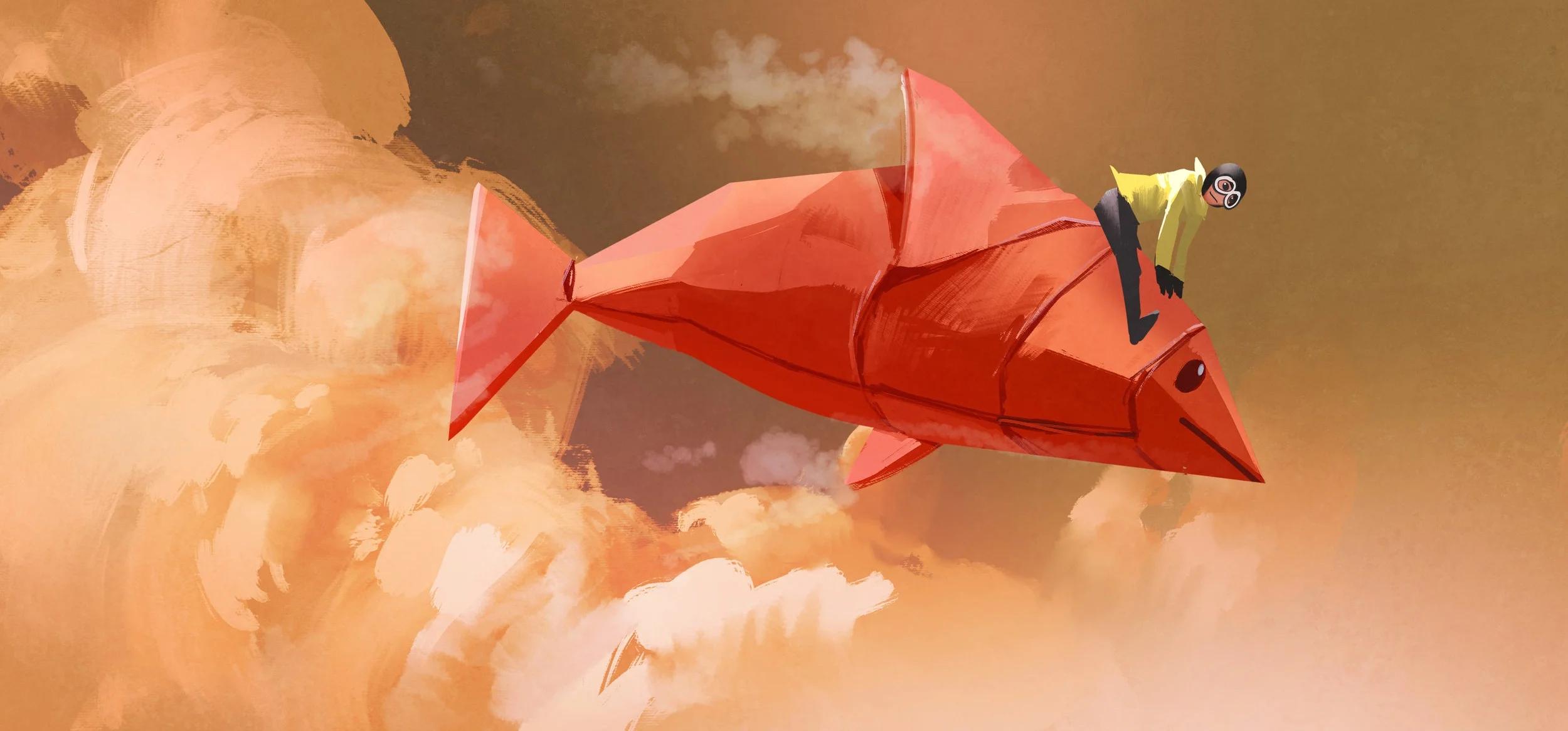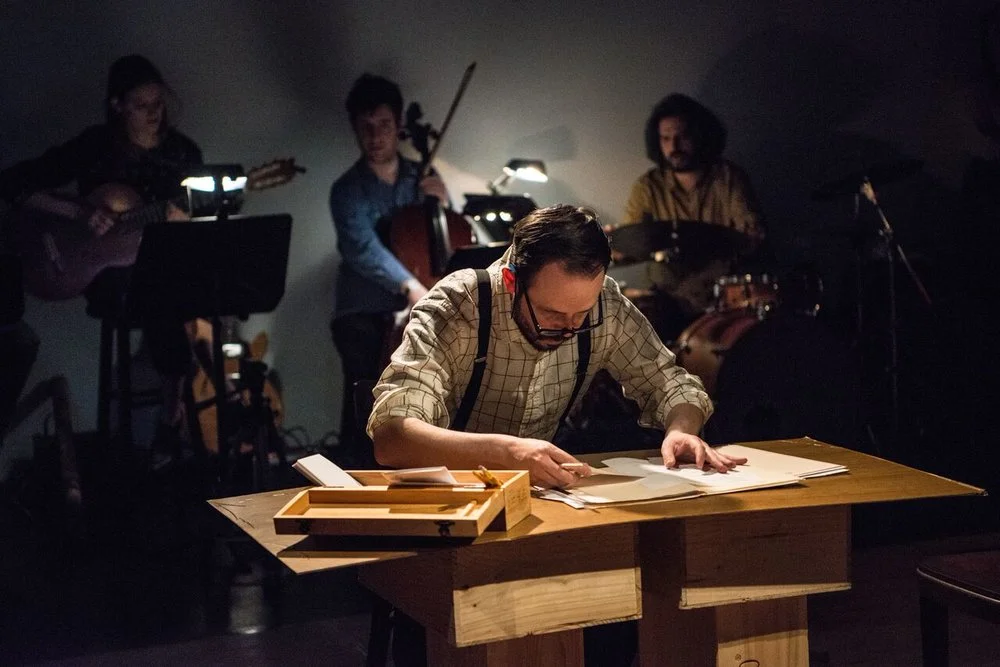Being from Elsewhere
Catherine Filloux’s plays are more than just stories, they’re catalysts; they aim to send you forth from the theater not just satisfied and thinking but to make change in the world. She tackles the underpinnings of the Civil Rights movement, prison reform, the Khmer Rouge, even the mental health of Mary Todd Lincoln. Her latest piece, turning your body into a compass (which was presented May 13th, 2019), was an experiment in form: not just a live performance, but a livestream created in collaboration with Culturehub, a blending of mediums that will reach and even wider audience than might typically be possible with a play.
“Set against the backdrop of this country’s escalating crackdown on immigrant families and children, Jean Hatch, a human rights advocate, finds herself at a crossroads. Desperate to expose the trauma our immigration policies inflict on innocent children, she aches for a fresh approach. When Jean meets Sophie Goldman, a neuroscientist whose work documents how the stress of deportation and separation alters a child’s brain development, the two women decide to combine forces. As Jean and Sophie fight an uphill battle to make those in power understand the consequences of their actions, the two women must hope against hope that their work will make a difference and one day change, even humanize, our current immigration policy.”
It’s an exciting opportunity for a playwright who strives, above all, to connect.
Where are your parents from, and what was your first language? Do you ever work in that language? How is writing for that language different from your experience of writing plays for English speaking audiences?
My mother is from Oran, Algeria, North Africa; my father is from Guéret, France. My father first came to the U.S. when he and a small crew sailed a catamaran across the Atlantic. They entered New York Harbor, passing the Statue of Liberty, which is a motif in turning your body into a compass. He then went on to build one of the first fiber glass sailboats, and subsequently became an oceanographer in San Diego, California. French was my first language; both my father’s parents were school teachers and my grandmother particularly did much to teach me a love for the actual act of hand writing and for French grammar. My mother did too. One of my treasured books is the handy “Bescherelle” book of French verb conjugations.
As a child growing up, I went back and forth between French and English. In first grade I won Bookworm of the Year, showing my great love of reading in the English language. I graduated a year early from high school in San Diego and the next year received my French Baccalaureate in Philosophy in Toulon, France. I had a yearning to continue to be bilingual. The exams were all written exams, where you were given many hours of time to complete the long papers. It was different from the often multiple-choice “testing” that took place in the U.S. As a playwright I write in English; my mother and I have translated one of my plays Photographs From S-21 into French. I have often worked with my mother on translation for a variety of translation projects, and I love the back and forth discussions we have enjoyed. When I saw Jean Genet’s play The Maids performed at the Comédie Française in Paris, it struck me that actors in France used language differently when they performed than in the U.S. I have an instinct that I am a bit caught in between language when it comes to the theater in the U.S. That my voice is somehow different.
“I’m an outsider. I believe it encouraged me to travel, as a I followed a variety of stories. It feels a bit like when you walk from rock to rock on the beach. One leads you to the next.”
How do you feel your experience growing up here but being from elsewhere has affected your perspective on this work?
It feels as if it is at the core of how I write. I’m an outsider. I believe it encouraged me to travel, as a I followed a variety of stories. It feels a bit like when you walk from rock to rock on the beach. One leads you to the next. Cambodia, Bosnia, Morocco, Guatemala, Northern Ireland and Northern Iraq, South Sudan. And recently my work has taken a national turn. Your phrase “being from elsewhere” is a good one. It seems to have many layers of meaning.
Much of your work deals specifically with human rights issues, both in the United States and abroad. Why is theater your chosen medium for tackling this subject matter?
Playwriting is my chosen medium and the subject of human rights keeps me inquiring. I don’t understand the U.S. and so I keep writing about our complicity and the pain it causes around the world. It must be a way for me to try to understand. Because I was born here and I live here, which came about through a very circuitous route.
How did turning your body into a compass come about? How was the piece put together?
In 2017 I read the following story in The New Yorker: “In Sweden, hundreds of refugee children have fallen unconscious after being informed that their families will be expelled from the country.” The body of my work includes the effects of PTSD on refugees, and the conflict of immigration to and from the U.S. I was interested in delving deeper into the scientific angle for turning your body into a compass and decided to research toxic stress in children living with the fear of deportation in their families. I talked to my brother who is a pediatric neurologist and he helped me understand how I might show this in my story.
In researching this piece, did you find there were similarities to other crises you've chosen to shed light on? Key differences?
In researching these crises there is a cumulative learning because I find common themes. Those will be present in my new piece and perhaps offer a further understanding of my inquiries. Well, “being from elsewhere” is certainly one. How people are able to connect as empathetic people and how they are not able to connect. What is said in dialogue and what is not said. It seems that what is left out of a story is as important as what is said? The glorious and difficult relationships between parents and children. How are people poetic? The attraction between two people. The hope of making change. The key difference is the Livestream story and how I structured the piece as a result, which is an experiment in storytelling.
Having produced work internationally, do you find that US audiences are as receptive to theater and other art addressing injustices and social issues as people around the world?
Sometimes it is an economic difference. In many countries where I’ve had work produced theater addressing injustices and social issues is not married to the price of the ticket. In the U.S. there is an obvious commercial aspect to theater, which has difficulty separating itself from certain kinds of work.
scenes from turning your body into a compass
What do you consider important about sharing these stories across cultures?
Regarding my play, Photographs from S-21, Bunrith Suon, a founder of AMRITA Performing Arts, in Cambodia, recalls seeing the production in Phnom Penh. “I was too small to remember, but I am considered one of the children of the War and the survival of the killing fields. The only memory in my head was the killing. Therefore, I don't like watching stories from the Khmer Rouge, because I don't want to recall those dreadful and horrible memories. Photographs from S-21 was the first play to awaken my thinking that this play should be a great educational tool in school. The play didn't make me cry, but think deeper into my memory, my people and my country’s history.”
The Cambodian human rights activist, Arn Chorn Pond, participated in conversations with the audience after the performances of Photographs from S-21 in Phnom Penh, and wrote and acted in the other play Night Please Go Faster. “When I saw the actors, who were involved in the play, they said that it changed their lives forever because they were able for the first time to really express themselves through the play. All of them went through the Khmer Rouge time and needed to have this experience and time to reflect, mourn the death of their family members and the time for public acknowledgment and respect, in order to heal. We have moved on slowly in our lives now from this horrible memory into the future, because we had the time, and the play allowed us to cry our guts out, to support and hear each other in our common sadness and grief to come together again. Not only your play did that for them but you--your willingness to be with us, willing to listen, ready to support, hug and cry with us in anything we feel, when we were all together during the rehearsals, during the performing and after. You were our family!”
How important has translation and touring become to your work? Has it influenced how you write and shape text?
Yes, because English was not my first language. I’ve been in translation all my life. I am always being influenced with how I write and shape text. With touring the work, translation has been at the forefront of the work.
This performance will be live streaming. Can you tell us more about the technology being employed? Why the decision to present work in this manner? Has the decision to approach work in this way affected this piece?
It was to reach a wider and different audience. I wrote it in a visual style that I thought would work for the Livestream format. And then I sought out creative technologists, filmmakers, experts in 360 Livestream who could help me to show the story.
What made you want to explore the livestream format? What about the format seemed right for this story? What have you learned from the technologists you're working with?
To reach people who might not go to the theater, for a variety of reasons. To explore a new medium, which in this case is a hybrid. I’ve worked before with CultureHub, which is a wonderful art and technology studio. However, I had never worked on a full piece with them, and I wanted very much to do that. Anyone can watch for free if they have access to a phone or computer and the internet. The technologists and filmmakers taught me about 360 degree Livestream and how best we could tell our story. Also we will do a Live Chat after the piece with experts. […] I would love to speak to you after the Livestream. I am very interested to see where the experiment leads.
This 360°LiveStream Web production combined actors performing live in front of cameras in the CultureHub studio (without a live audience) with pre-filmed and pre-recorded footage. Audiences anywhere, who have internet access, can tune in for free to the livestream on computers, tablets, and smartphones. For anyone with access to a headset, it can also be experienced in VR.
While turning your body into a compass can be watched as a traditional program, 360° livestream technology allows viewers the opportunity to interact with the production in real time. You can explore different areas of the stage and follow the actors as the story unfolds by moving your smart phone around or swiping the screen. On a computer, you can navigate the 360° environment with your mouse by clicking and dragging to new viewpoints or by operating a compass of arrows.







